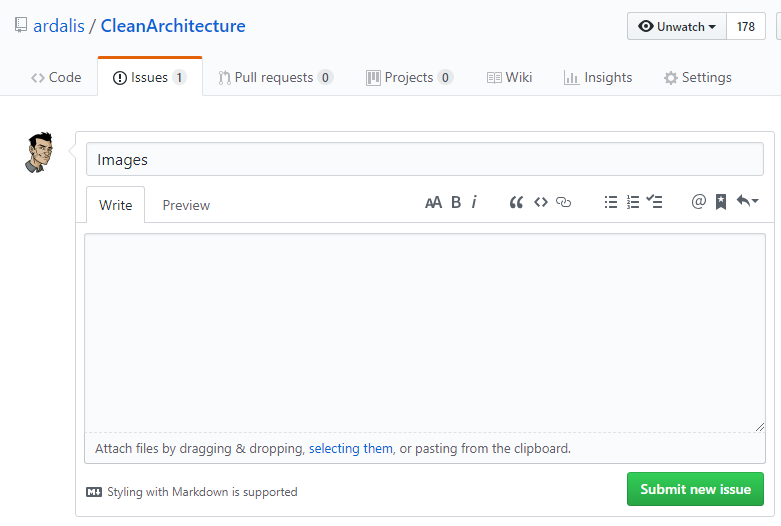Open source powers software on a planetary scale: 99% of code is built on it. The rewards and challenges of creating open source are deeply familiar to the maintainers and developers who create it, but they often go unseen by others. We read a lot about the preeminence of software, less so about the communities of people pouring their efforts and passions into it.

This is why we’re launching The ReadME Project, a new space for the community to share their stories, and to learn from each other. Today, and throughout the coming months, you’ll read stories of personal growth, professional challenges, and lessons learned—the journeys you might not see behind projects you probably use every day.
Markdown is widely used in blogging, instant messaging, online forums, collaborative software, documentation pages, and readme files. Since the initial description of Markdown 10 contained ambiguities and unanswered questions, the implementations that appeared over the years have subtle differences and many come with syntax extensions. Dillinger is an online cloud based HTML5 filled Markdown Editor. Sync with Dropbox, Github, Google Drive or OneDrive. Convert HTML to Markdown. 100% Open Source! GITHUB FLAVORED MARKDOWN GitHub.com uses its own version of the Markdown syntax, GFM, that provides an additional set of useful features, many of which make it easier to work with content on GitHub.com. USERNAME ˜MENTIONS Typing an @ symbol, followed by a username, will notify that person to come and view the comment.
We’re excited and grateful that the first profiles feature Henry Zhu, Samson Goddy, Sonia John, Ovilia Zhang, and Dirk Lemstra. Their stories are live right now, ready for you to explore, and there are so many more to come. Nominate an inspiring developer whose work you’ve been following or unsung contributors that have done great things for your project.
We hope you take something constructive from these personal profiles and merge it with your own story. Open source is incredible, uplifting, and collaborative, but it’s also imperfect. All of us can learn from the creativity, grit, and perseverance of the individuals who build it.
The ReadME Project features the stories of the people behind open source. We want this to be an engaging destination for you, so please send us feedback and contribute your ideas that can inspire and inform all of us. We’ll continue to shine the light on individuals, but you can expect us to experiment with some new projects along the way. We can’t wait to hear what you think!
Article version: GitHub.com
Article version: GitHub.com
You can add a README to your GitHub profile to tell other people about yourself.
In this article
Git Readme Template
About your profile README
You can share information about yourself with the community on GitHub by creating a profile README. GitHub shows your profile README at the top of your profile page.
You decide what information to include in your profile README, so you have full control over how you present yourself on GitHub. Here are some examples of information that visitors may find interesting, fun, or useful in your profile README.
- An 'About me' section that describes your work and interests
- Contributions you're proud of, and context about those contributions
- Guidance for getting help in communities where you're involved
You can format text and include emoji, images, and GIFs in your profile README by using GitHub Flavored Markdown. For more information, see 'Getting started with writing and formatting on GitHub.'
Prerequisites
Readme File Github

GitHub will display your profile README on your profile page if all of the following are true.
- You've created a repository with a name that matches your GitHub username.
- The repository is public.
- The repository contains a file named README.md in its root.
- The README.md file contains any content.
Note: If you created a public repository with the same name as your username before July 2020, GitHub won't automatically show the repository's README on your profile. You can manually share the repository's README to your profile by going to the repository on GitHub.com and clicking Share to profile.
Adding a profile README
Git Readme Formatting
In the upper-right corner of any page, use the drop-down menu, and select New repository.
Under 'Repository name', type a repository name that matches your GitHub username. For example, if your username is 'octocat', the repository name must be 'octocat'.
Optionally, add a description of your repository. For example, 'My personal repository.'
Select Public.
Select Initialize this repository with a README.
Click Create repository.
Above the right sidebar, click Edit README.
The generated README file is pre-populated with a template to give you some inspiration for your profile README.
For a summary of all the available emojis and their codes, see 'Emoji cheat sheet.'
Removing a profile README
The profile README is removed from your GitHub profile if any of the following apply:
- The README file is empty or doesn't exist.
- The repository is private.
- The repository name no longer matches your username.
The method you choose depends upon your needs, but if you're unsure, we recommend making your repository private. For steps on how to make your repository private, see 'Changing a repository's visibility.'
Further reading
